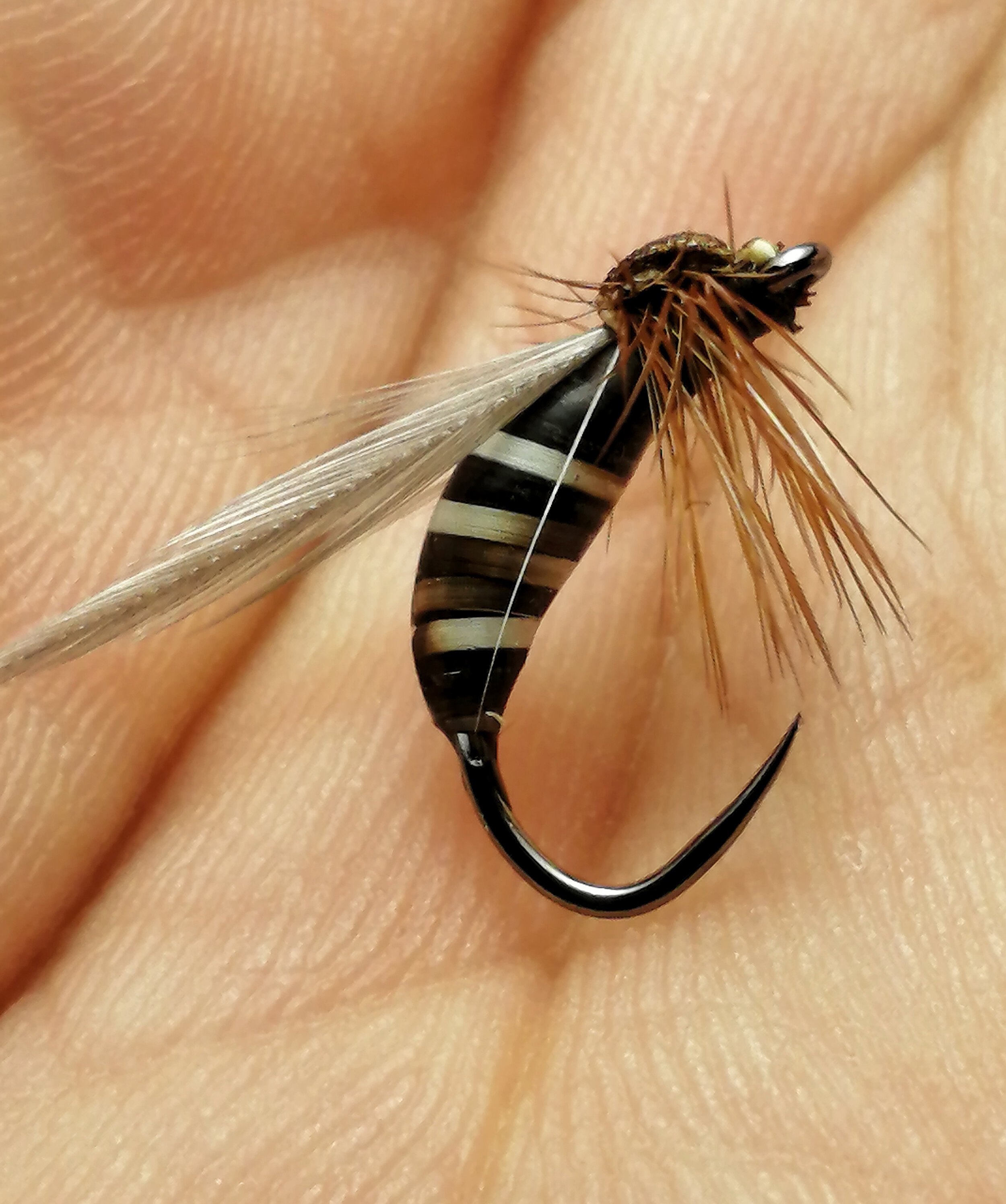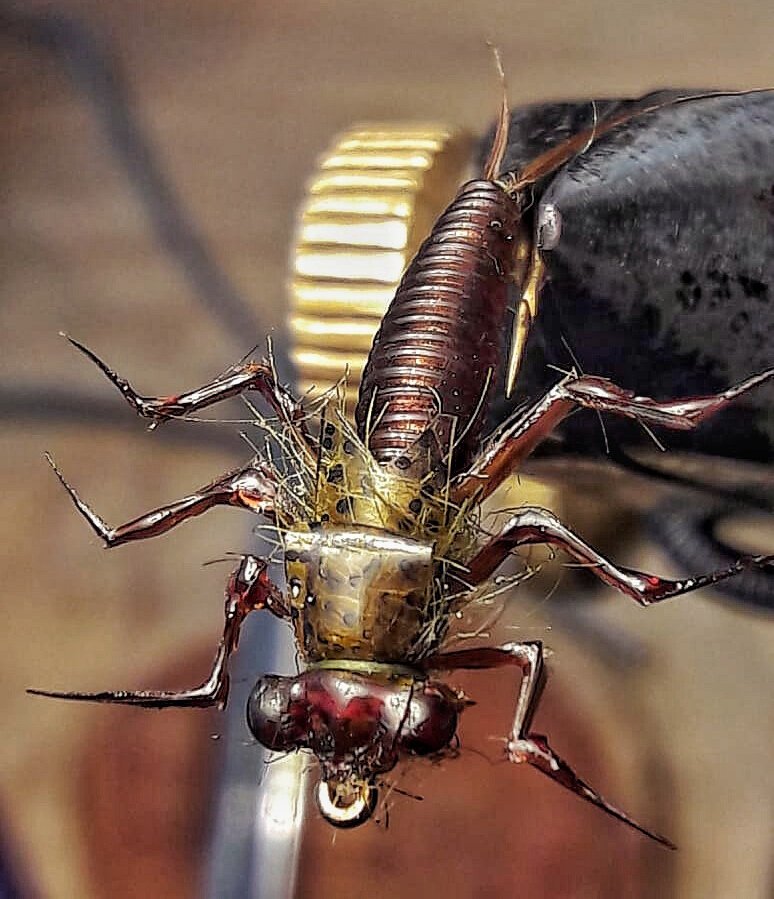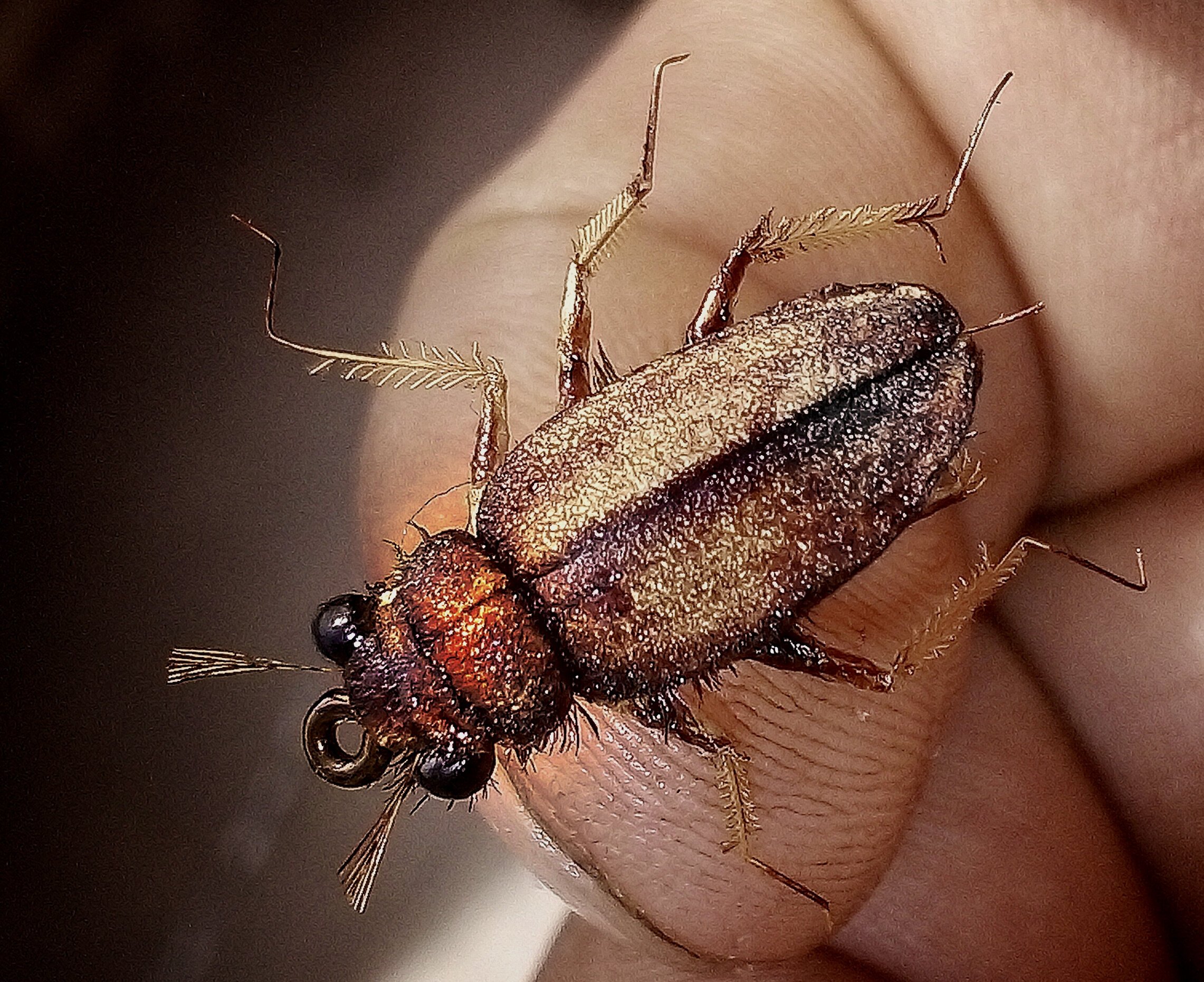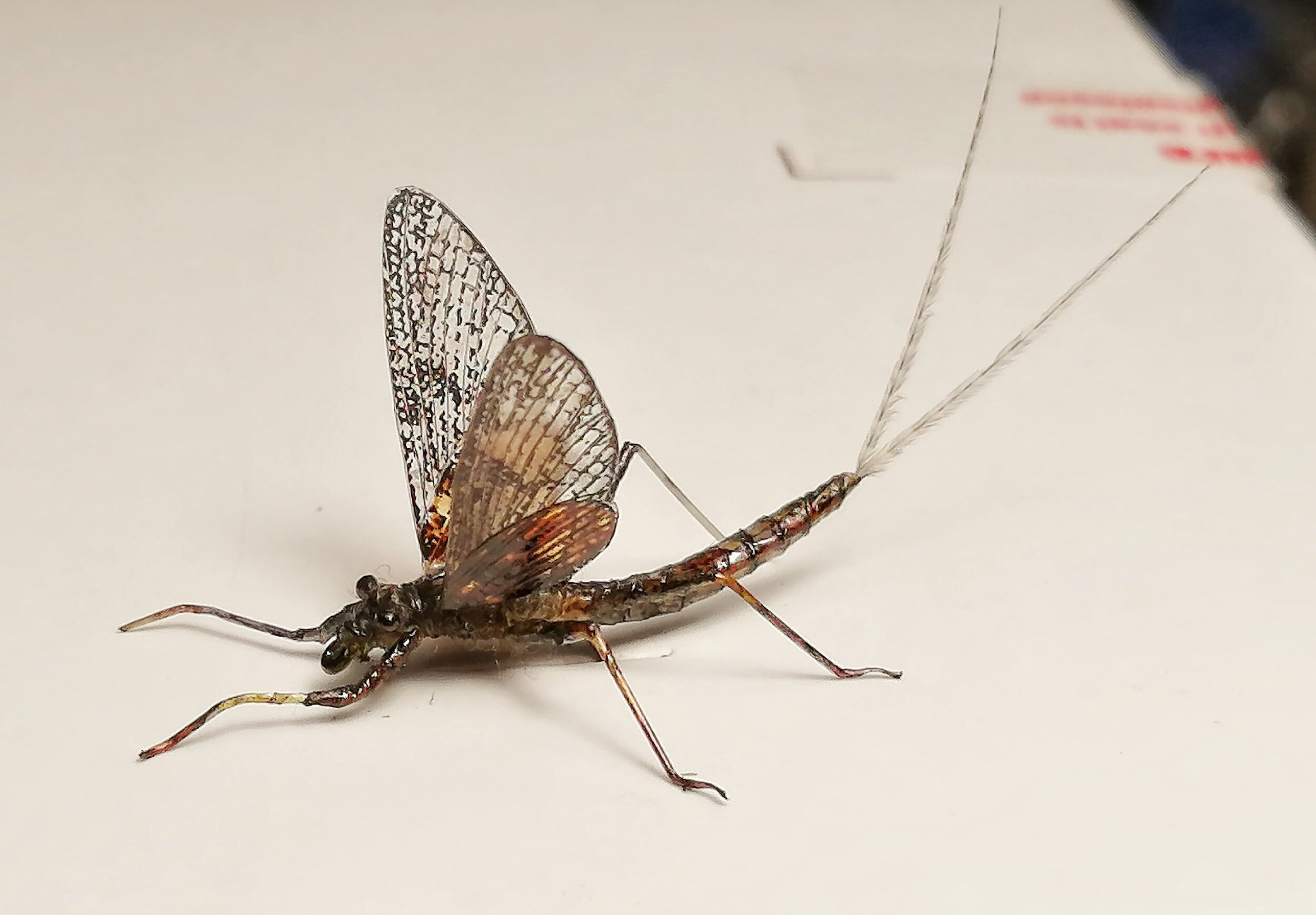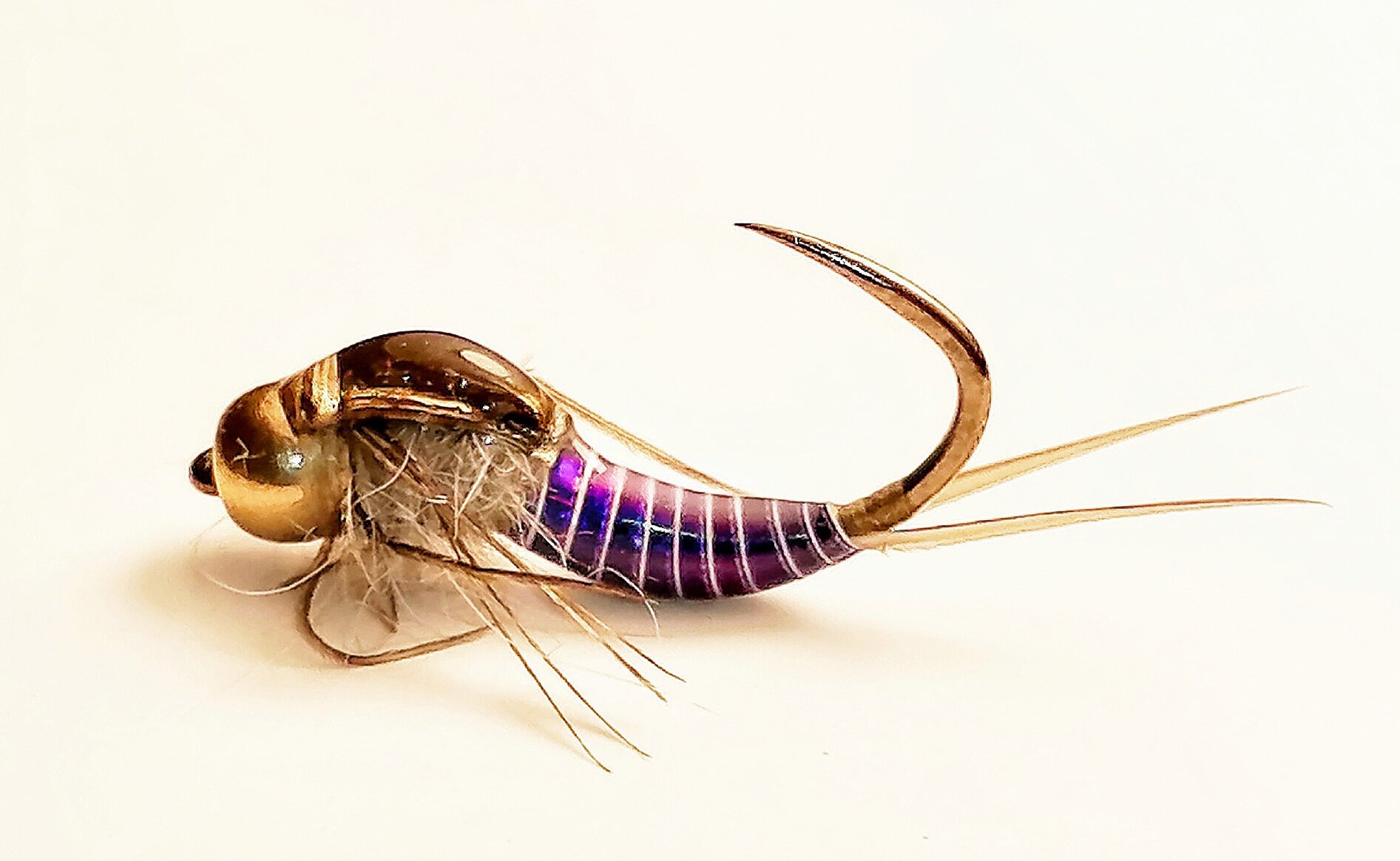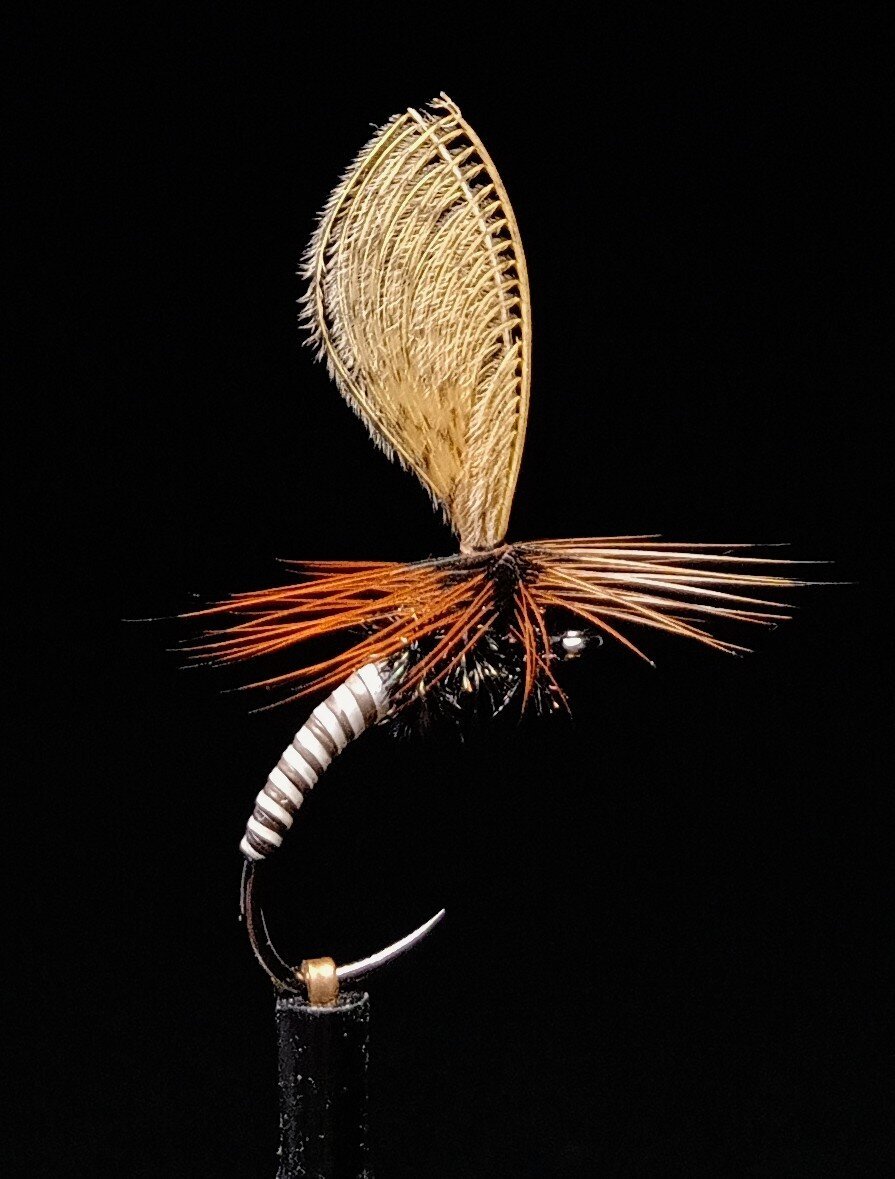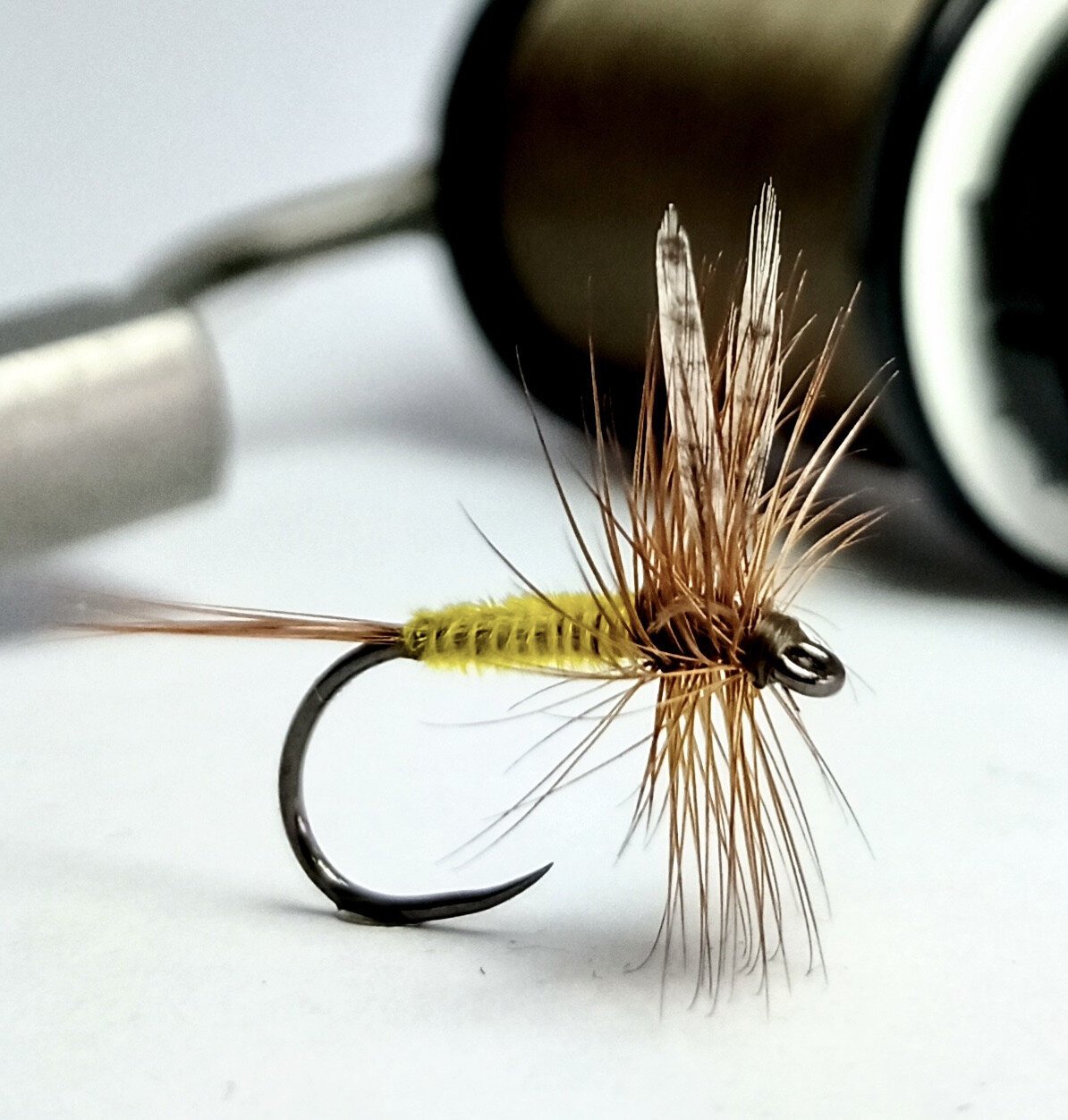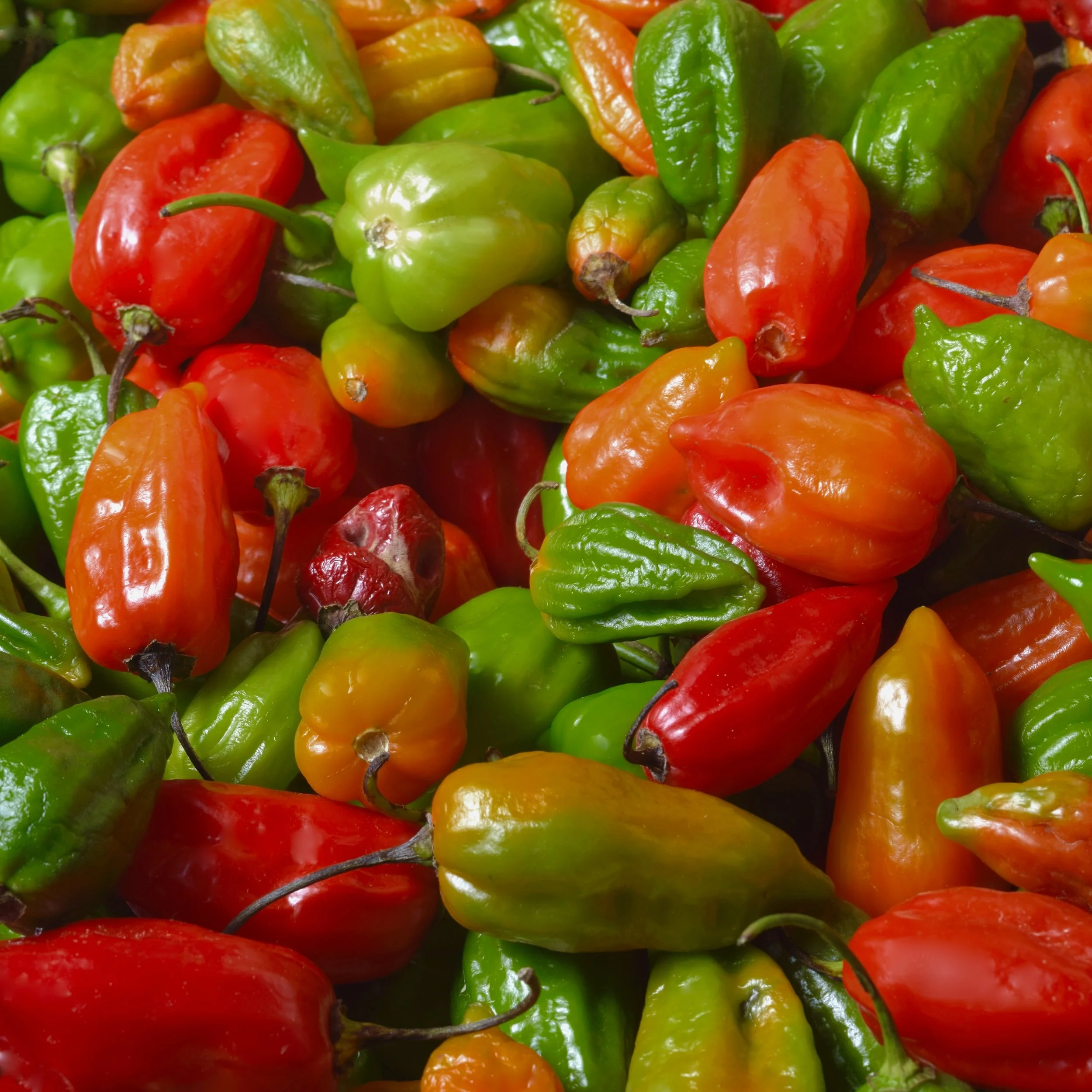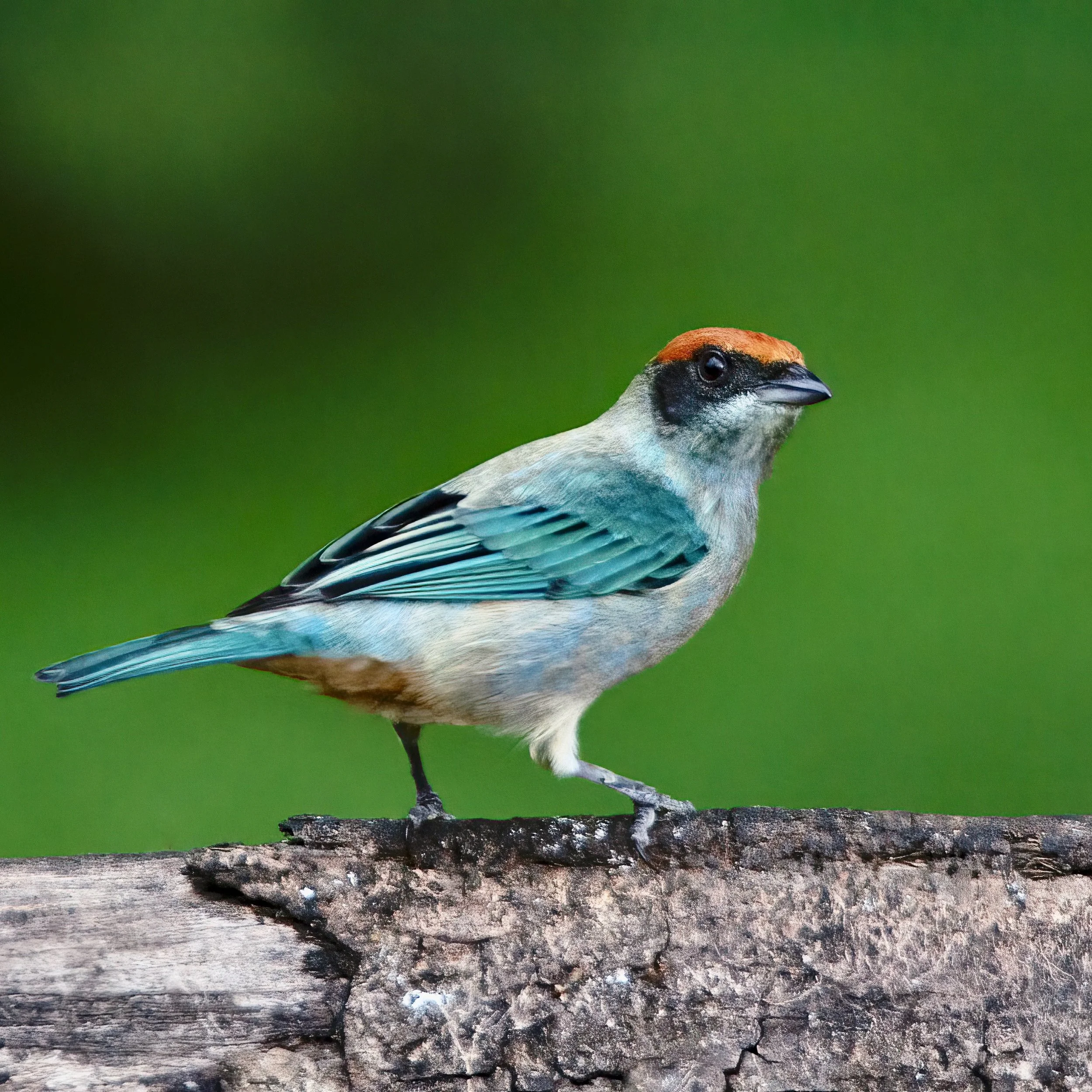A Thousand Rivers Run Through It
Fly Fishing in Colombia
by Peter Rockstroh
The Hills of Mavecure overlook the black waters of the Inírida River, about three hours away from the spot where it meets the chocolate brown waters of the Orinoco, shortly after merging with the white waters of the Guaviare River. This confluence area of these three rivers is known as the Star of Inírida. ©Peter Rockstroh 2021
“Give a man a fish, and he will have a meal. Teach a man how to fish and he will have a means to a meal for all his life. Teach a man how to fly fish and you will never hear the end of it.”
(Anonymous)
Selective bias in memory is something terrible. I have cut quite a few conversations short when, after I mention that I live in Colombia, the response is yet another bad joke about drug dealing. It seems that all some people remember about this country is what they see in cheesy movies and soap operas about narco kingpins and drug cartels. I also noticed that some of these humor-impaired acquaintances couldn’t even locate Colombia on a map. In response to these kinds of calumny of the entire nation many educated Colombians will start rattling off the works of Nobel laureate Gabriel García-Márquez, the paintings of Fernando Botero and other famous paisanos in an effort to counter the stereotyped image some people have of Colombianos.
I don’t even bother anymore.
¿Why would someone that doesn’t read and has no knowledge of basic geography know anything about Colombian painters, writers, or other figures of intellectual pursuits?
Colombia is obviously much more than the sum total of stories of its famous and infamous women and men. The natural and cultural menu the country has to offer is so broad and deep that those who develop an interest in any topic will find it a never-ending source of wonders. But good news rarely makes the front page (“If it bleeds, it leads”, right?), or even the second page, so interesting news generally takes a far and remote last place.
I have had many pleasant surprises in Colombia over the past seven years since I returned to live here, especially with activities I never associated with this country. It is fascinating how it embraced some foreign cultural practices (Christmas and Halloween), how some are rejected outright (traffic laws and red lights), and others are absorbed and transformed under a local set of rules. Some call this metamorphosis “Tropicalization”.
In 1938 the Colombian government introduced the western North American rainbow trout (Oncorhyncus mykiss) into Lake Tota, as an incentive to develop settlements around the lake in the province of Boyacá. Based on water parameters required to raise trout the conditions were perfect for this species, which rapidly adapted and spread to other regional bodies of water. By the 1960’s rainbow trout were fairly well established in almost every body of water of the cool highlands of Colombia. The intention behind this project was basically to increase the protein intake of the inhabitants of this area and stimulate local tourism through fishing.
And that it did.
It was nowhere stipulated that the fishing technique should be glamorous, and it wasn’t. Fishermen were basically of the worm-plunkin’ kind and the culinary school of catch-and-fry.
Patacón con trucha. ©Peter Rockstroh 2021
The result: Patacón con trucha (fried trout with fried, mashed plantain), the typical dish of the Cocora Valley. This region is also famous for its amazing stands of the national tree, which isn’t a branched and leafy tree in the ordinary sense, but rather a gigantic wax palm (Ceroxylon quindiuense - with apologies for the tourist guide digression).
¿What is the big deal with fly fishing anyway?
Fly fishing is a bit of a strange hobby. It combines the balance and rhythm of Tai Chi, the fine motor skills of macramé, an in-depth knowledge of entomology and a basic understanding of limnology on top. This is multidisciplinarity at its eclectiest. And it is not forgiving: You think you know everything about the fish you want to catch, you have learned to identify its preferred food items, and you have the skills to tie a fly that can imitate their prey. You are still far from catching that fish.
You overshoot and miss your cast and you spook the fish.
It takes time, work, practice, and study, and can be quite frustrating at times.
U.S. humorist P. J. O’Rourke, an avid fly fisherman himself, pointedly wrote: “Cast and swat. Cast and swat. Fly fishing may be a sport invented by insects with fly fisherman as bait…On the other hand fly-fishing does have its attractions. I love to waste time and money.”
¿Why do people still want to learn this rather archaic art of catching fish? And on top of it, many fly fishing aficionados don’t even keep the prize. They just grin for a while as they admire their piscine trophy, and then let it go.
Truth be told, fly fishing is visually impressive when practiced by an experienced individual. There are skills that humans have developed that are a thing of beauty. Certain sports, dance moves, gymnastics routines and martial arts are captivating and anyone who has paid attention during these events can sense what goes through everyone’s mind: “It must be a fantastic sensation to be able to do that”.
In a nutshell, mastering the art of a controlled elegant motion is why many people start fly fishing.
Fly fishing is said to be contemplative fishing. Ideally you fish by sight in clear water in beautiful surroundings and, although many wives won’t believe this when you return home with an empty creel, on many occasions the experience itself is far more rewarding than the catch. Colombia certainly has many streams and lakes whose scenery fits that description.
Colombia also has the world’s most diverse freshwater fish fauna.
It is here where the story becomes interesting, that is to say, when the first local fly fisherman cast his flies at the 1,300+ native fish species living in the dark, wide and unexplored waters of this country.
¿So how did Colombia go from worm-plunkin’ to La Liga de Izaac Walton?
Despite large scale deforestation, the province of Boyacá still has a large amount of streams whose edges, overgrown with grasses, have not been eroded. This is the main reason that many streams there run clear over rocky bottoms, making them ideal for trout fishing. ©Pete Socha 2021
In order to get to the bottom of this story I interviewed a local researcher, back country outfitter and fishing historian, Carlos Heinsohn. Among the stacks of articles and books that sit precariously on his desk–somewhere–are a few obscure references that mention Englishmen poking local waters with fly rods at the turn of last century. Enough to know there had been early attempts, but apparently not adventurous enough efforts to resonate in newspapers or travel books of that period. Fly fishing began in Colombia officially with the introduction of trout.
Even at the earliest stages of rainbow trout in Colombia, there were already a few men casting flies at them. A Lithuanian engineer by the name of Gervidas Kuptys lived in southern Colombia, where his father was employed by a mining company, when he was very young. There he had contact as an adolescent with a group of Englishmen that practiced this sport. He is probably the first recorded fly fisherman in Colombia. His enthusiasm created a following and in the 1960’s he moved to Medellín, where he organized a fishing group and started teaching casting and tying.
Looking a bit like the head of some deep ocean oddity, the lure-destructive end of a payara or vampire tetra (Hydrolycus armatus). This formidable characin species’ Latin name translates as the “armored water wolf”. Payara are large, extremely fast and spectacular northern South American sportfish that have attracted the attention of growing numbers of visiting fly casters due to their intimidating looks, leaping ability and difficulty to keep on a fly line.
And “yes”, payara will bite if given the opportunity. Image: ©Peter Rockstroh 2021.
Meanwhile, in Bogotá, Guillermo Téllez, a.k.a. Trapito (“little rag”) a well-respected member of PISPESCA, the Colombian Aquaculture and Fishing Association, took fly fishing in Colombia a few steps farther. Téllez was an avid and adventurous fisherman, who took his fly rod to the rivers of the eastern Llanos as a local pioneer fishing for native peacock bass (Cichla species) and payaras/vampire tetras (Hydrolycus armatus and H. scomberoides). His exciting stories whet the appetite of fellow fishermen, who soon organized trips into the region for the thrill of casting big flies into the coffee-colored waters, and see the surface explode when one of these magnificent predators destroyed the work of long hours of tying in a fraction of a second.
They soon learned that the beasts lurking in these regions would require a very different approach when it came to fly fishing.
During the beginning of the 1970’s Daniel Herrera, a fishing prodigy, started making a name for himself as a fisherman, winning fishing competitions at a very young age. His knowledge and enthusiasm gave fly fishing in Colombia a great boost. He would later become the technical director of the Colombian Aquaculture and Fishing Association. His interest in fly fishing was obvious in the institution, and he made a major effort in making clear that sportfishing was not just an alternative activity to procure food. The reward for catching a big fish is the act of landing the fish, not the value you get for the fish as a fillet.
Pavón (Cichla orinocensis) is one of the 15 currently recognized species of carnivorous cichlids in its genus. They are voracious predators that will feed on anything they can swallow, on the surface and below, including their own species. Fly fishing for them is preferably done with surface lures (flies), for the adrenaline rush generated by watching them take a fly. ©Carlos Heinsohn 2021
It is important to keep this in mind, as this is the line that divides fishing–the sport–from fishing defined as the commercial or individual activity of catching fish for consumption or sale. As sportfishing started to settle in and define its boundaries in Colombia vis-à-vis the legal and environmental regulations, there was an increasing number of fly fishers, included Carlos Heinsohn, who began pushing their requirements for a strict catch-and-release policy for sportfishing. They found echo with many fishing buddies and local guides at the fishing spots and, although still not a legal requirement, most fly fishers adhere to this practice to this day. Surprisingly, they also respect this guideline fishing for trout, which is an introduced species that probably displaced a significant part of the endemic fish fauna while getting established. Their logic in this respect is very simple: Don’t teach people to kill animals.
While I agree that is a good point, I also like eating fresh trout.
A very nice payara and professional angler Pete Socha smiling for the camera. Fast running river behind. ©Pete Socha 2021
Today, about 300 Colombians practice fly fishing as their main outdoors activity. Not much for a country with 45 million inhabitants, but still an interesting number considering this is not a country with a rod and reel fishing tradition. Apart from that, it is interesting to see where fly fishing in Colombia is heading. In Chile and Argentina, the sport was developed by European immigrants from countries with a fly fishing heritage, and they sought the same species as they did in their countries of origin (i.e. introduced brown trout, Salmo trutta). To this day, the sport in those two countries has remained as traditional and conservative as any purist could desire. Colombia embarked a different path, starting with ignorance and curiosity, then on to experimentation via remarkable creativity, and those who participated in the process are still having a blast. Rather than worrying what happens if you cast the wrong fly at the right fish, they went out into local waters to toss the right fly at the wrong fish.
¿Are payara what you get when you cross a king salmon with a Ginsu knife set?
Fly fishing for payara/vampire tetra is rapidly gaining popularity in Colombia since it can be combined with pavón/peacock bass in the same regions of the country, albeit under very different conditions. While most species of peacock bass are fished for in quiet sidearms of blackwater rivers, payara (pronounced “pie-ah-rah”) are sought in tumbling rapids and shallow, very fast flowing rivers usually in early morning or late afternoon. They are infamous for destroying hooks on both sturdy lures and specialty wet flies.
Further south there is an increasing number of people interested in trying their luck with arowana (Osteoglossum bicirrhosum) and arapaima (Arapaima gigas) on a fly rod, but the most entertaining fly fishing in the Amazon basin–once you’ve caught enough pavón and payara to check those boxes–is found casting small streamers with a light rod in shallow waters. Among many other fish, the most interesting captures that have been reported by local fly fisherman so far are undescribed species of pike cichlids (Telecichla species), large characins (Brycon species), and different genera of piranhas (Serrasalmus and Pygocentrus species).
The flooded forest is an unusual and fascinating ecosystem of Amazonian and Orinoco rainforests, since in some areas the water can rise 40’/12.30 m, drowning the low canopy strata and leaving only the crowns of emergent trees above the surface. Looking at the scenery below the surface shows the jungle offering food and cover to a totally different crowd. Business unusual. ©Peter Rockstroh 2021
To prove a point, to set up a business and most probably to work doing what he likes best, in 2015, Carlos Heinsohn opened JAIPAC, a fishing outfitter that takes its clients on week-long tours, fly fishing for the largest and fastest fish the jungles of the Orinoco basin have to offer. The project is based on sustainability. He has an agreement with indigenous communities that protect fisheries in small, isolated bodies of water inside their land, and grant the fishing outfitter access to take his clients to fish these pristine waters. The local people generate income working as guides and running the camps, without having any impact on the fish populations. It is common that in some families a few members work in the live tropical fish business, while other family members work as angling guides for JAIPAC.
During the high-water months, it is also possible to gain a better understanding of canopy communities of plants and animals. Canopy plants that produce and disperse floating seed during this season will have seed adhering and sprouting at the same height above ground, while bird dispersed seed will be distributed over a much broader range. ©Peter Rockstroh 2021
The advantages of this business model are easily understood. Clients fish these relatively undisturbed waters, in which they could theoretically catch the same fish on several occasions. Everything caught is measured, photographed, and released. The fish just keep getting bigger and the fishing just keeps getting better.
These communities have rapidly learned the value of live game fish. By now they probably have stopped wondering why their clients pay every time they come, to catch the same fish again. This approach is the same as in the communities of fly fishing guides in Ascension Bay, in Quintana Roo, Mexico. The guides in that area specialized in bonefish, permit and tarpon, and their business has been growing to the point of reservations necessary several months ahead.
Above left, a tucán fish (Chalceus erythrus), a common surface water dwelling prey species for many regional sportfish. Image ©Peter Rockstroh 2021. Right, a school of Arari flies designed to mimic tucáns. Deceivers are wetflies that are tied to imitate baitfish. They can be very accurate imitations of local fish or simply a generic baitfish shape with oversized eyes or marks to entice predators. The shape, color and materials chosen are often picked to achieve a balance between form and application. These flies are usually as effective as the technique the fisherman uses. Arari flies tied by Carlos Heinsohn. Image: ©Carlos Heinsohn 2021.
A a handful of colorful local Deceiver pattern wet flies, Fire Tiger Mottas tied by Carlos Heinsohn. Image: ©Carlos Heinsohn.
Fly fishing also took an interesting turn in Colombia when it came to fly tying. Although fly fishing and fly tying are activities that go mano a mano, not every fisherman ties his flies and not every person that ties flies goes fishing.
Go figure.
A handful of people have been tying flies in Colombia since the early 60’s and 70’s. But still not many. There are probably no more than 100 people that fish and tie their own flies in Colombia, scattered throughout the country. A few will occasionally organize workshops or short courses on casting and basic fly tying techniques. Nowadays, there are even occasional workshops with different local and foreign instructors, brought by different groups and loosely organized fish associations.
But the actual advancement of this part of the sport has been in the hands of a couple of people who have shown consistency and discipline over the years, improving their skills, and sharing their knowledge with those interested in learning. One such reference is Master fly tier Pete Socha, a self-taught self-confessed tying addict, who discovered this passion–in his own words–relatively late in life, laughing as if he was ashamed having wasted previous years studying and working rather than tying. He teaches fly tying, he ties commercially and also ties as an artistic expression. The line that divides flies tied to catch fish and flies tied for fun and aesthetics is occasionally blurred, looking at his work. Although he can and does tie all the classics by heart, his fascination with materials and attention to details has enabled him to tie his own versions of many designs. A few years ago, he began filming his sessions and soon afterwards he began sharing them on social media.
Pete’s show is called, “Y a usted, que Mosca lo picó”, which translated in word and sense means, “And what kind of fly crawled up your … sleeve”. It is an interesting event to say the least. I had the great pleasure of attending a live session and it took me a long time to find a way to describe it: Imagine a show halfway between a quilting club for Navy Seals and “Wayne’s World” broadcast on ESPN’s fishing channel.
Pete lives in the outskirts of Bogotá. The day I visited him, the place had the dynamics of a busy tackle shop anywhere: People coming and going with rods, tying materials and questions; a car parked in the driveway with a large payara skull drying on the hood; two young guys with half-finished flies, waiting for the master to return with tips on finishing their designs. Fortunately, the place is kept organized by Pete’s boss, his three-year-old daughter Catalina, who can melt Daddy with a smile. This is as familiar as family environment can be, and it teaches far more than just fly tying skills. It’s a value pack in its truest sense.
Like a Sensei, Pete San takes his students very seriously and guides them gradually through the techniques that will allow them to understand what they are doing and why. Having lived in the U.S. and Argentina has given him a Pan American vision of the hobby, which has raised many more questions than ready answers. Question number one is: What will it take to put Colombia on the map as THE prime freshwater fly fishing destination? The country’s record fish diversity, outstanding landscapes and stunning environment seem to add up to a winning formula.
It is high time to teach Juan Valdez how to fish.
Boyacá is one of the 23 Provinces of Colombia. The snow-capped peak of El Cocuy overlooks the northern part of this region, better known for its historic landmarks than for its natural wonders. The final battle for the independence of the country from Spain was fought here, and occasional skirmishes still break out between family clans in this area over mining rights, since this province is also home to the most famous emerald mines of Colombia.
Boyacá was also the birthplace of trout introduction in Colombia and of Carlos Holguin, a.k.a. Carlitos Panda.I wrote this introduction because a few local fishermen believe that his special way of tying flies is nothing amazing or surprising, since he was raised with fish in his backyard, nourished on troutmilk, so to speak. I believe his skill level and personal style put him in a category all by himself.
He ties flies so realistic, you can use them to catch entomologists.
Galleries shown above and below: Wasp dry fly, two stonefly variants over a hyper-realistic spider and beetle combo made by Carlos Holguin. Sinking flies imitate insects or crustaceans that fish pick up from the bottom. This particular group probably contains the most accurate imitations of the original food item in fly tying. Since they can (and often will) be scrutinized up close by the fish you’re trying to catch, you had better do a good job imitating what it’s going to feed on. Whether you are presenting a stone fly larvae lookalike to a trout in a mountain stream, or a small crab mimic to a bonefish on a Belizean flat, these flies must match color, size and shape of the original prey item to attract the curious fish. Flies and photos: © Carlos Holguin 2021.
Since early childhood Carlos was one of those kids that just couldn’t resist handling all sorts of bugs. While other kids screamed, he would have caterpillars crawling in his hand. In his early teens he was probably out in the yard looking for insects, while his classmates were trying to look cool at the first parties that involved dancing. Like so many others, he became interested in fly fishing after seeing the film, “A River Runs Through It” (1992), based on Norman Maclean’s haunting short story of the same name, and researched everything he could about this new thing he had discovered. When he learned about fly tying, which brought him full circle back to his childhood passion for bugs, he started dedicating every spare minute to this activity.
Some time into the hobby he first saw the work of Argentinian tying master Sergio Córdoba, whose hyper realistic flies can also fool insects and entomologists alike, and that set a new goal for Carlos. He spends hours researching new and old materials to tie realistic elytra, legs and antennae for his bichos (critters), to learn how they fold, flare, spin or crack under the pressure of his tying materials. This research has paid off, as he now ties mainly for collectors but also occasionally for people crazy enough to cast his lifelike specimen to a hungry fish.
When I asked him about his passion for the hobby, he told me he spends about as much time tying as he does fishing.
“My house is a disaster”, he confessed. “I rarely go out with more than two flies, because I never have fishing flies. What I have ready is usually in boxes waiting to be sent to clients. I don’t have a catalogue either.”
A dry fly simulates an insect sitting on the water’s surface. As such, it does not need to be a perfect imitation of the insect, but it has to mimic the image a fish sees on the surface. Above left, a mayfly (Ephemeroptera), masterfully tied by Carlos Holguin shows a recently hatched adult sitting on the surface. Most of Carlos’ clients keep this type of work on their desks rather than their fly boxes. Right, this strange looking fly is a nymph, referring to the nymphal stage during metamorphosis of–in this case–a fly, probably of the family Chironomidae. Bear in mind that this type of fly is meant to fool trout, by triggering a "curiosity reflex”. Images: ©Carlos Holguin 2021.
The difficulty of tying dry flies consists of choosing the materials and techniques that will allow constructing an insect simulation, small and light enough to be thrown on the water at the end of a line and float on the surface. This means that the combination of hook and dressing have to have a density smaller than water, which has a density of 1 gram/cc. Steel has a density of 7.8 gram/cc, so the dressing of the fly has to compensate and bring the average density below 1 gram/cc.
The most obvious aspects of a dry fly are its small size, the way it is tied, distributing the weight over a large surface, and the frequent use of hollow hair which reduces density and helps keeping the fly afloat because of air trapped inside the hairs. In addition to these aspects the fly tier uses as little material as possible, to avoid increasing the weight of the fly.
Above left, a classic design with a twist. This fly is Pete Socha’s version of an Adams, which has been tied for nearly a century. Its deceptively simple design is hard to tie since it must touch the surface perfectly centered, with the hackle tip wings pointing upwards, to mimic a resting mayfly from below. Right, parachute flies such as this little masterpiece simulate an emerging insect on the surface. They are typically tied on a bent caddis hook to allow the hook, dressed as the exuvia (the molted skin from the previous instar) to remain under water and the emerging insect, stretching its wings for the first time, to stay above the surface. Flies and images ©Pete Socha 2021.
Although not considered dry flies, there’s another group of flies that are tied for surface feeding fish. Aptly named topwater flies, these include poppers and divers. Poppers are flies that have a head and/or body made of a floating material like balsawood or styrofoam. They have a tail or legs or simply pieces of rubber bands tied above the hook and are often made to imitate frogs. The head has a flat or concave front, so that when it is pulled across the surface it gurgles and makes a popping sound, to attract predators. Divers are tied with a similar principle, that is, with a floating body but rather than having a flat front they have a downward sloping head and when retrieved they dive and surface when the line is relaxed.
Although he has clients that actually fish with these flies, a lot of them end up in shadow boxes as miniature trophies, tied to perfection in probably the last country you would associate with this sport, or what Izaak Walton called “The Contemplative Man’s Recreation” (The Compleat Angler, 1653).
Fishing guide Luís Gutiérrez casting for pavón in flood forest near Puerto Carreño, Vichada Department. ©Peter Rockstroh 2021.
Fly fishing is one of the ideal activities that connects ecosystem conservation and human development in remote areas. Outside of a few very overfished streams and stretches of rivers in the northern countries, it has no discernible negative environmental impact. It provides a great example of sustainable activity, and it can provide a source of income to villages in remote parts of the country, where fishing communities can improve their livelihoods, sharing their knowledge with visitors.
Dawn on the Upper Amazon River, Amazonas Department, Colombia. Image: ©P. Rockstroh 2021
Jungle Beastie. Carlos Heinsohn (with hat) holding a beautiful Pavón, before releasing it. Fish of this size are common in the sidearms and lagoons of blackwater rivers of southeastern Colombia. ©Carlos Heinsohn 2021
Fishing Colombia’s lowland jungles provide an experience where the thrill of great sportfishing is heightened by the sum of emotions and impressions that the environment provides. The surroundings are so rich that after a short time the marvelous becomes mundane. By the second day, the loud, raucous calls of groups of macaws settling in for the night or calling the flock to wake up and move to their feeding grounds in the morning has already become an integral part of the daily cycle. The same happens with Orinoco pink dolphin (Inia geoffrensis humboldtiana) sightings. These strange creatures, attracted by the splashing of a recently caught fish, will curiously approach the boat to see what the commotion is all about. After two days, their presence still amazes, but then almost becomes expected. And for a week, or at least five days, visitors have seen this world as it was five hundred years ago, and as it should be in five hundred years hence.
A place of joy filled with natural wonders that is an antidote to the rest of an often-troubled world.
This program and others along these lines are paying their way to protect these jungles. For as long as the river supplies the community’s income, they won’t touch the forest. With further dedication and a bit of luck, this initiative will grow and help to raise the living standards of these villages while preserving the environment around them. Hopefully the children that participate in these programs will have the chance of a better education, better health care and more opportunities for economic advancement in general. Some of them will continue with these programs, understanding not only what they mean to their communities but also for the sheer joy of casting into these dark brown waters just to see what comes up from the deep to take the fly and run with it, making the rod bow, the reel scream and a smile crease their face.
I would like to thank Carlos Heinsohn, Pete Socha and Carlos Holguin for sharing their time, knowledge, and love of this sport. I spent last weekend carrying boxes and organizing bags and Ziplocs and jars, and now that I’ve separated feathers, fur, and synthetics, I can start tying again.
Should I have a question on technique or finish, now I know who to call.
For those interested in fly fishing the Colombian lowlands, please check out Carlos Heinsohn’s JAIPAC’s offerings.
The usual legal disclaimers about linking to tourism and travel sites around the world apply: This is not a blanket endorsement of the general visitor services available in the country of Colombia nor the region in general, Carlos Heinsohn nor the entity JAIPAC in particular, so please do your own due diligence prior to to booking a vacation. Don’t bother coming back here to whine or threaten to sue if you get injured, didn’t like the accommodations, was the victim of imperfect connecting flights or a mugging, disliked the quality of the food that you get served, encountered “not enough fish”, or anything else bad that might/happens to you or your traveling companions while on vacation.
All this (hopefully) fully understood, feel free to check them out at:
FB - @flyfishingcolombia
email - crh@alalata.com
All content ©Exotica Esoterica LLC® 2021, ©Peter Rockstroh 2021, ©Carlos Heinsohn 2021, ©Pete Socha 2021 and ©Carlos Holguin 2021.
Fly fishing in Colombian flood forests…
¿An angler’s Paradise found? Image: ©Peter Rockstroh 2021.
Follow us on:






